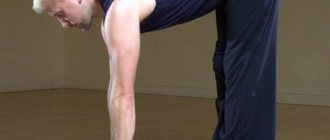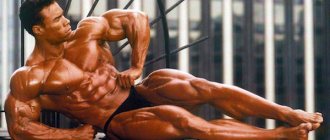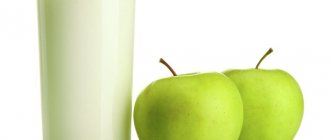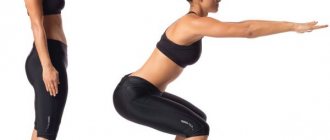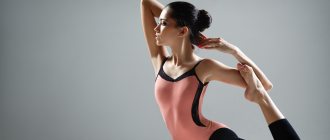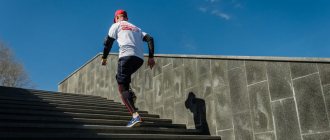In the last few years, the cult of the body has been rapidly developing in the CIS countries. If ten years ago the usual way of spending time for young people was to sit at the entrance with a beer and a cigarette in hand, now young boys and girls spend more time in the gym. Of course, not everyone still leads a fully healthy lifestyle, but the popularity of sports is clearly growing and growing very quickly.
Among the huge number of gym visitors, one cannot help but highlight bodybuilders - people for whom sport is both a way of life and a source of income. IQReview figured out exactly how athletes earn money, what their income level is, and what it generally takes to become a professional bodybuilder.
About bodybuilding and its difference from other types of “iron” sports
Before dealing with income, it is worth delving into the terminology separately. For the average person who has never visited the gym, a bodybuilder is any person with an athletic build and large muscle mass. However, even an amateur can gain weight up to 100 kilograms and “shape” it well.
In fact, bodybuilding (or bodybuilding) is a professional sport in which the athlete's task is to build and build ideal-looking muscles. Bodybuilding competitions of various sizes are regularly held - from city to world. This sport is usually played by men, but there is a small percentage of women (naturally, separate competitions are held for them).
Let's give a simple example. Has everyone seen Arnold Schwarzenegger? This is a professional level bodybuilder. This sport is characterized by large muscle mass and large dimensions.
Now - about “related” sports:
- Powerlifting. If in bodybuilding the athlete’s goal is the beauty and aesthetics of the muscles, then in the PL the main task is to lift maximum weight in 3 basic exercises: squats with a barbell, deadlift and bench press. At the same time, a powerlifter can look whatever he wants - be overweight, have “bad” proportions, have unprominent muscle groups: in this sport this is not important.
- Weightlifting. An Olympic sport related to powerlifting. The athlete’s goal is to lift the maximum weight, only in other exercises: the snatch and the clean and jerk.
- Crossfit. The “young” direction, which is a combination of weightlifting, powerlifting, includes elements of gymnastics and athletics. Exercises in this sport are usually performed in a circle, one after another, without breaks. As a result, athletes usually look “lean”, with good muscle mass, but body beauty is not the goal in this sport.
About various categories and related areas
Bodybuilding in the last few years has begun to be divided into separate categories and areas. If previously only athletes with huge muscle mass could take part in competitions, now “lightweight” categories have appeared:
- Men's Physique and Women's Physique (“beach” bodybuilding). The category of “lightweight” bodybuilding is very popular in the Russian Federation. It does not require huge muscle mass from athletes (for example, for an athlete 180 cm tall, the maximum weight is 84 kg). In addition, according to the rules, participants must perform in shorts - that is, the thigh muscles are covered, and they do not need to be worked out at all. In this direction, important nuances are proportions, physique symmetry, relief (but the requirements for relief are much lower than in classical bodybuilding).
- Fitness bikini. A popular women's trend in which pronounced muscle relief is not needed. On the contrary, in a fitness bikini the ideal is a fit and slender female figure with “lightly” defined muscles, without excessive mass. In fact, any girl can achieve such results, even without pharmacological support. Quite often, applicants who started playing sports only six months or a year ago perform in fitness bikinis.
There are several other categories in women's bodybuilding; we will not consider them separately.
Material on the topic: How to look for your first job?
Conducting master classes
A master class that attracts crowds of people is a great way to earn a tidy sum for an athlete after his career ends. A striking example is Alina Kabaeva, the queen of rhythmic gymnastics.
Her talent is deservedly recognized not only in Russia, but also worldwide. Alina's master classes amaze with their beauty and refined technique, and there is no end to the audience.
According to the government procurement website, holding a master class in rhythmic gymnastics from Olympic champions such as Alexei Nemov and Svetlana Khorkina costs the state approximately 3,000,000 rubles. Agree, it turns out to be a good additional income.
How long does it take to become a bodybuilder?
If a person who has never picked up a barbell in his life begins to actively train, it will take about six months for the first more or less noticeable results. During this period, you can gain weight, and an increase in muscle mass will be visually visible.
Professional bodybuilding is a completely different matter. From scratch to competitive form you will have to work for 3-4 years. If your goal is to perform not in the “classics”, but in the light version of Men’s Physique, then you can do it in one and a half to two years, under favorable conditions.
Coaching career or your own school
If a person has achieved heights and awards in sports and is not devoid of teaching talent, then coaching is the best way to realize oneself. Evgeni Plushenko, after finishing his figure skating career, became a successful coach of Olympic champion Adelina Sotnikova.
Plushenko devotes most of his time to teaching children complex elements in figure skating, and the cost of one individual hour-long training is about 60,000 rubles.
A coach of a football team can also earn a substantial salary, and data on the salaries of Russian coaches for 2018/2019 eloquently confirms this.
Kurban Berdyev, now the highest paid football coach in Russia, is a former Soviet football player - defender and midfielder.
What is needed for rapid progress, and what determines the effectiveness of training?
Becoming a professional bodybuilder is not an easy task. First of all, the difficulty of this matter lies in the regularity of training. Even the most physically gifted athlete will not be able to achieve good results if he does not train consistently, without breaks.
In addition to the stability of classes, the following factors play an important role:
- Body type (somatotype). Conventionally, the human body can be divided into 3 types (ectomorph, mesomorph, endomorph). They differ from each other in proportions, tendency to deposit fat and tendency to gain muscle mass. If you are an ectomorph (thin build, usually tall, low fat percentage, thin-boned skeleton), then it will be more difficult for you to break into classical bodybuilding. But it’s the easiest way to build an aesthetically pleasing athletic figure and compete at Men’s Physique. Endomorphs have no problems with gaining weight, but they may have difficulties with “cutting”: they lose excess weight reluctantly and difficultly. For mesomorphs - the golden mean - it is easiest to achieve large and at the same time “dry” mass.
- Genetics. In this case, we are talking about the shape of the muscles, their attachment, and the amount of subcutaneous fat.
- A properly designed training program. There are a lot of exercises for building muscle mass, and finding the perfect combination for your body is not an easy task. The difficulty here is that there is no universal program that is suitable for everyone. It must be compiled individually, usually only through trial and error.
- A properly designed nutrition program. If you press 120 kilograms, but eat without control and restrictions, you will not achieve ideal relief. Diet is half the success of any bodybuilder. Therefore, you need to learn not only the technique of performing exercises, but also the rules of nutrition.
- Correct intake of sports nutrition and various supplements (vitamins, minerals). Filling the body's need for calories, proteins and vitamins naturally (from regular food) is both difficult and expensive. Therefore, various supplements come to the aid of athletes. We are not talking about steroids, but about protein, creatine, gainer, amino acids, and vitamin complexes. An athlete should also know about such supplements - it will be difficult to do without their use.
- Control and measurements. To see the exact progress (or lack thereof), it is recommended to constantly record all the results of your workouts. In a notebook, in a special application on your smartphone, in a table on your computer - it doesn’t matter, but make it a habit to record your training day. What did you do, with what weight, how many repetitions in how many approaches. It is recommended to periodically record your measurements: weight, biceps, hips, chest, waist.
About pharmacological support (steroids)
Separately, it is worth mentioning the use of anabolic steroids. Whatever professional bodybuilders say about their naturalness in terms of “chemistry” is not true. If an athlete weighing 100-120 kilograms stands in front of you, with six-pack abs, prominent veins, and a “dry” appearance, you can firmly say that he is familiar with steroid drugs from his own experience.
Healthy eating
Sooner or later, any athlete comes to take “chemistry”: progress eventually hits a natural ceiling, when training without pharmaceutical support no longer gives an effect, or does, but very slowly. And then the athlete has a choice:
- accept current form and slow progress;
- look for opportunities to improve your workouts in a natural way (exercise more, more often, try experimenting with exercises, eat more, sleep more);
- start taking steroids.
Naturally, if an athlete’s goal is competition, then he almost always chooses the third option.
This solution is relevant for those who already have extensive training experience. If you are a beginner whose biceps girth has just reached 35 centimeters and who bench presses 50 kilograms, it is too early to think about steroids. Of course, they will have an effect, but it will be short-lived. After completing the course, there is a high chance that most of the weight gained will be gone, even if you continue to exercise.
Own business
If the name and surname of an athlete is on everyone’s lips, then why not take advantage of this to increase personal capital. Two-time Olympic champion of the USSR hockey team, Igor Larionov, after retiring from sports, began to actively engage in winemaking and the restaurant business.
The cost of a bottle of wine from Larionov starts at 1,800 rubles; income from wine production allowed the champion to move to North America, where he has lived with his family for more than 28 years.
Developing your own business has its advantages for active athletes and those who have already completed their careers:
- financial insurance in case of temporary or complete incapacity;
- moral satisfaction;
- the possibility of constant development (business processes are dynamic and require attention and decisive action).
Business is an interesting and profitable option for making money, but it is not suitable for everyone. For example, Michael Jordan, in addition to a successful advertising collaboration with Nike (income for 2020 amounted to more than $100 million), is an investor in the esports organization Team Liquid. According to Forbes, Team Liquid has an estimated value of $200 million at the end of 2020.
About costs: how much money do professionals have to spend and on what?
Bodybuilding is a very expensive sport: if you lack finances , it will be difficult to achieve serious results. Now we will talk only about professionals - performing athletes.
In addition to the usual costs (clothing, housing, utilities, etc.), a professional bodybuilder has to spend money on the following things:
- Gym membership. The average price for a good club is about 14-20 thousand rubles per year (or, if broken down by months, about 1200-1700 rubles).
- Sports nutrition. Let's take the average minimum level for 1 month: 1.5 kilograms of good protein, 150 grams of creatine, vitamin-mineral complex, fish oil. The approximate cost of such a set is about 3,500 rubles.
- Proper nutrition. It all depends on the athlete’s diet, his goals (weight gain or “cutting”), his current weight and the desired speed of obtaining results. Since costs for athletes will always be individual, we will give the average amount for an athlete weighing approximately 85-90 kilograms: about 3000-4000 rubles per week (or 12-16 thousand per month). to save significantly on nutrition: a lack of calories or poor quality food simply will not allow muscle mass to grow normally.
- A course of steroid drugs. Such products are quite expensive (of course, if we are not talking about a solo course of methane, but about “cleaner” drugs). On average, a course of 2-3 substances for 4-5 weeks + drugs for post-cycle therapy (to neutralize side effects and to stabilize the natural hormonal balance in the body) will cost at least 4000-5000 rubles. However, such expenses are not needed every month - on average, athletes take 1-2 courses per year.
- Analyzes before and after a course of steroids. Previously, athletes (at least most of them) took anabolic drugs just like that, without any tests, and were guided only by their effectiveness in terms of their mass, strength and definition. They did this mostly out of ignorance. However, now you can find a lot of detailed information on this topic. Therefore, both before the course and after its completion, an experienced athlete always goes to the doctor. The approximate price of a complex of analyzes is about 1,500 rubles.
Now let's estimate the amount. For 1 month of active training, on a diet, taking anabolic steroids and sports nutrition, a professional athlete needs to spend about 23-24 thousand rubles. In months without taking steroids, the amount will be slightly lower – about 17 thousand.
Place for sports
Please note that the daily routine of a professional (performing) bodybuilder must be stable and strict:
- 4-6 meals daily.
- Timely intake of sports nutrition, supplements and steroid medications.
- Regular workouts, which on average take about one and a half to two hours (if you take stretching, warm-up and the exercises themselves, not counting changing clothes, showering, traveling to the gym and back). The minimum number of workouts per week is 3, but most professionals do it more often - 4-5 times a week. In the periods before competitions or during steroid cycles, the amount of training can be increased even more. Some athletes even train twice a day.
- Sleep - at least 7 hours a day. Muscles grow during rest, and the best rest is sleep. If an athlete sleeps 5-6 hours a day, this will significantly slow down the process of muscle growth.
- Rest. Between training sessions, the athlete should rest physically and not load cement or move furniture.
- No stress. Any stress is a surge of the “stress hormone” (cortisol). Cortisol is the enemy of any bodybuilder: it breaks down proteins, promotes fat storage and increases glucose levels. Therefore, it is contraindicated for a professional athlete to be nervous.
Material on the topic: Opening a gym: what do you need to know for a successful start?
Now try to imagine what type of work could fit into such a schedule?
Therefore, in order to become a professional bodybuilder who competes, you need to have some source of income that will not interfere with everything that was written above.
Methods and amount of earnings
Now let’s move on directly to what and how a professional athlete can earn money. We will list the possibilities for an athlete who has an ideal physique and extensive experience.
Bodybuilders
Making money from bodybuilding is possible mainly only for professionals who not only compete, but also actively maintain their accounts on social networks and appear on YouTube.
The list is something like this:
- Conducting personal training in gyms. The simplest option: you can train people who go to the same gym with you. The approximate minimum price for 1 personal lesson is about 300-400 rubles. Suitable not only for high-level professionals, but also for those who have just started performing. This type of income is used by, if not all, then a very large part of athletes, even after the end of their competitive career.
- Conducting online training. The direction is new, but not popular. This option is not often chosen, since it is most effective to work with a trainer live. It may be relevant if you offer clients not training in the technique of conventional exercises, but more complex services. This could be teaching posing (for clients who are preparing for competitions) or teaching weightlifting movements. Most often, “jocks” are limited to lifting exercises: bench press, deadlift and squat and cannot demonstrate the correct technique for pushing and snatching. If you are a recognized professional in TA, then the likelihood of finding clients for online classes will be higher. The approximate minimum price for 1 lesson is about 300 rubles.
- Drawing up training programs. It’s a very common way to make money, because it doesn’t require much time, and you can work this way in any mode—even from home. The approximate cost of creating an individual program is about 500-1000 rubles.
- Drawing up a nutrition plan. The same as the previous point, however, more knowledge and experience is required for questions on dietetics. The approximate minimum price for a completed plan is about 500 rubles.
- Contract with manufacturers of sportswear or sports nutrition. An option that is gaining popularity in the Russian Federation. Depending on the fame of the athlete, he may either be provided with free products or be paid some amount in addition. Relevant for media personalities - for those who actively maintain accounts on social networks, posting photos and videos, or a YouTube channel.
- Advertise on your pages on social networks and in videos on YouTube. With a large number of views, income can come not only from direct advertisers, but also from affiliate programs.
- Prize money for winning competitions. In fact, only a few should count on such an opportunity. Large sums (exceeding at least 50-100 thousand rubles) for victory are usually paid only at large competitions - regional or state scale. At city-scale competitions, winning is not always even rewarded with money (unless we are talking about Moscow and several other large cities) - the winners can often receive sports nutrition, clothing and a medal.
What athletes look like after finishing their careers. Plump stars
At the peak of their career, athletes are forced to keep themselves in excellent shape. After leaving big sport, not everyone manages to maintain an ideal figure. We collected photos of athletes who gained extra pounds after leaving sports and told why this happens.
Poster hero: what 90s movie stars look like now
Which of them was able to stay in shape? Not everyone succeeded.
Mike Tyson
Mike Tyson at the peak of his career looked great and was one of the most prominent heavyweights. Alas, after a series of troubles, the legendary boxer began to decline, and after finishing his career he noticeably gained weight. Now Mike looks better, but not a trace remains of his former relief.
Photo: www.instagram.com/miketyson/
Denis Pankratov
Swimming is one of the most suitable sports for a perfectly proportioned figure. Two-time Olympic champion butterfly swimmer Denis Pankratov gained excess weight after retiring, reaching 150 kg. In an interview, Pankratov shared that he intends to get in shape. We wish him strength and good luck!
Photo: www.instagram.com/maximmir71/, www.instagram.com/holdjunesun/
Tonya Harding
Famous American figure skater with a difficult and scandalous career. Now Tonya is clearly not in the best shape, and figure skating does not forgive extra pounds.
Photo: www.instagram.com/therealtonyaharding/
Tonya against everyone: in fact, everything was even tougher than in the film
Unfictional events that killed the sports career of an American figure skater.
Ronaldo
One of the best players in the history of football began to gain excess weight while still a football player, which significantly shortened his enchanting career. In 2011, Zubastic gave up football and can now eat chips on the beach without a twinge of conscience.
Photo: www.instagram.com/ronaldo/
Yevgeny Kafelnikov
The most titled tennis player in Russia, Yevgeny Kafelnikov, also lost his form, ending his professional career. However, Evgeniy himself talks about extra pounds on social networks and actively trains to lose weight.
Photo: www.instagram.com/yevgenykafelnikov/
Ronaldinho
Another star Brazilian who, having hung up his boots, relaxed. In his youth, Ronaldinho was not shy about celebrating goals by taking off his shirt and exposing his abs. Today he is the official ambassador of the Barcelona football club. In the photo, the football functionary has a small belly.
Photo: www.instagram.com/ronaldinho/
Anna Semenovich
Perhaps not everyone remembers this, but Anna Semenovich is a professional figure skater. After finishing her sports career, Anna gained weight, but this did not stop her from becoming a show business star and attracting men with her curves.
Photo: www.instagram.com/ann_semenovich/
Diego Maradona
The legendary Argentinean became famous not only as a phenomenal football player, but also as a great expert in bad habits. Now Diego Maradona is not in the worst shape, which is good news - the football legend still takes care of his figure and health.
Photo: www.instagram.com/maradona/
Why do athletes gain weight after retiring?
Excess weight after the end of an athlete's career is not always associated with indiscriminate eating. There may be several factors at play here:
- Changing the rhythm of life
After finishing his career, the athlete’s body experiences stress, as he has been accustomed for many years to receiving and spending more energy and being in good shape. When the intensity of training decreases, the body simply does not have time to adapt, and an excess of calories occurs. All this is aggravated by the possible sedentary work, for example, of an official or a sports functionary, the lack of a sports diet and exhausting training.
- Age-related changes
It's no secret that with age, the body's metabolism slows down. By the end of his career, an athlete will have to train even more than before in order to maintain the level of metabolism that was at its peak. Not everyone finds the strength and time for this. Another option is to limit yourself in food. Not everyone is capable of this either, especially when for the first time in 20-30 years you don’t have to think about what and how much you eat.
- Tendency to corpulence
Many people have a physiological tendency to be overweight. Athletes are no exception. If during their professional career it cost them enormous efforts to fight this feature, then, having stopped performing at a high level, many find it difficult to control themselves.
Sports stars in old age. Grandfather Messi, grandmother Medvedev and elderly McGregor
We are sending Kokorin, Sharapova, Dzyuba and others into retirement. New trend on Instagram.
Actresses over 50 who look no older than 35. What's the secret?
Life hacks and secrets that helped them keep themselves in amazing shape.
Extra pounds don't go away - what to do?
We'll tell you why you can't lose weight, although you try very hard.
